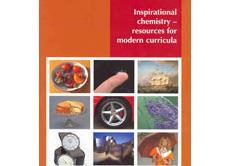Investigate natural composites, unless you’re chicken?
This experiment takes three sessions with about 20 minutes of work in each session. It involves taking apart a natural composite, chicken bone, and looking at the consequences of the removal of each of the components. Students can do this as a practical exercise. Alternatively, they could be given prepared samples to examine. The experiment helps to show that composites are not only manufactured materials but also exist in nature. Bone is generally about 30% collagen and 70% hydroxyapatite (calcium phosphate) dry mass. The water content varies.
Prior knowledge required
- This activity assumes that students know what a composite is.
- Students should be able to calculate density from mass and volume but may need reminding how to do it.
- Students should be able to calculate volume – the easiest way is for them to submerge the bone in a measuring cylinder of water and measure the volume of water displaced.
Equipment required
Per pair or group of students:
- 2 cleaned chicken bones – see note below
- Beaker – large enough to hold the chicken bone
- 1 mol dm–3 hydrochloric acid – sufficient to cover the bone in the beaker
- Measuring cylinder – 25 cm3 will probably suffice; it needs to hold the chicken bone
- Crucible or other heat proof dish for heating the bone
- Eye protection.
Per class:
- Access to a balance (accurate to two decimal places)
- Oven or other way of warming the bones overnight at 60 °C
- Furnace or hot oven to remove the collagen.
An alternative to heating the bone in an oven or furnace is to roast it in a Bunsen burner flame.
This should be done in a fume cupboard and eye protection worn.
The bone may spit and crack so care should be taken. This step could possibly be done by students.
Note on chicken bones
The bones should be raw and clean. They are probably best cleaned by the technician prior to use.
A pan scourer usually works well – as much meat and gristle as possible should be removed.
Avoid using a scalpel or other sharp instrument.
Alternatively, simmering (not boiling) in water with a small amount of sodium carbonate loosens the flesh and it is then easy to remove, eg with an old toothbrush.
The bones should be rinsed after this procedure.
Health, safety and technical notes
- Read our standard health and safety guidance
- Chicken bone is a potential source of salmonella and other diseases. Ensure that students are aware how to handle the bones safely. They should wash their hands after handling bone and before eating or putting anything else into their mouths. If this is a concern then the bones can be sterilised after de-fleshing, eg by leaving them in domestic bleach overnight. They should be rinsed prior to use.
- Wear eye protection when using 1 mol dm–3 hydrochloric acid. See CLEAPSS Hazcard HC047a
- The bone ash produced in the final stage of this activity may contain calcium oxide.
- Avoid contact with skin and eyes.
- Eye protection should be worn and gloves made available for students with sensitive skin.
Possible homework activity
It might help students if they find out about the structure of bone between sessions 2 and 3.
What to do
Session 1
- Put one of the chicken bones into a beaker and cover it with hydrochloric acid. You are trying to remove the calcium phosphate from the bone.
- Leave it for 1–2 days. If you leave it for much longer, you will also remove the collagen. This is chicken bone 1.
- Measure the mass and the volume of the second bone. Calculate its density. This is chicken bone 2.
- Then heat the bone in an oven at 60 °C overnight to remove the water.
Session 2
- Use forceps or tongs to remove chicken bone 1 from the acid, wash and dry it gently
- Investigate properties of the bone
- Take chicken bone 2 and weigh it. Mass of chicken bone 2 = _______________ g
- Have chicken bone 2 heated more strongly in a furnace or very hot oven. This will remove the collagen and leave just the calcium phosphate.
Session 3
Chicken bone 2 has now become bone ash. This bone ash can contain calcium oxide which is an alkali and can cause damage if it gets in your eyes.
Wear eye protection and gloves.
Avoid inhaling any dust or powder from the bone.
Weigh what is left of chicken bone 2. Mass = _____________ g
Downloads
Investigating a natural composite - chicken bones
PDF, Size 0.2 mb
Additional information
This resource is a part of our Inspirational chemistry collection.
Inspirational chemistry book

A collection of resources, aligned with GCSE bodies, to support learners in England, Wales, and N Ireland.
- 1
- 2
- 3
- 4
- 5
- 6
- 7
- 8
- 9
- 10
- 11
- 12
- 13
- 14
- 15
- 16
- 17
- 18
 Currently
reading
Currently
reading
Investigating a natural composite | chicken bone
- 20
- 21
- 22
- 23
- 24
- 25
- 26
- 27
- 28
- 29
- 30
- 31
- 32
- 33
- 34
- 35























































































No comments yet